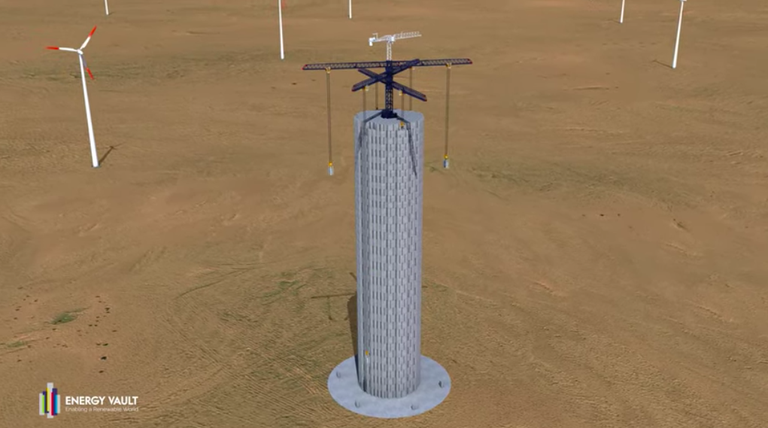Generating green energy is no longer the biggest problem we have to face nowadays. It is how to make sure the generated energy is usable anytime which become a greater problem because most people still don’t know about green energy storage methods.
Fossil fuel is known to have the most efficient mass to energy conversion; thus, we never really have to work much on the storage of ‘energy’. But with green energy, it is a little bit different.
But it doesn’t mean that green energy cannot be stored, even in another green way that doesn’t pollute our environment.
Here are four smart methods to store green energy, so that we can harvest it again anytime we want.
CAES

Compressed Air Energy Storage (CAES) is an energy storage system that involves compressing air using excess renewable energy and then storing it in underground containers, such as old mines or caverns. The compressed air is stored at high pressure, which allows it to release a significant amount of energy when it is released.
When energy is needed, the stored air can be released to drive a turbine that generates electricity. The compressed air is heated by burning natural gas or biomass, which increases its volume and expands it to drive the turbine. This process generates electricity that can be fed into the grid.
One of the advantages of CAES is its ability to store large amounts of energy for long periods, making it useful for balancing grid demand. CAES also has a high efficiency rate, up to 70% in some cases, which makes it a cost-effective energy storage option.
However, CAES has some limitations. One of them is that it requires suitable geological formations to store compressed air, which may not be available in all locations. Additionally, the use of natural gas or biomass to heat the compressed air may not be considered entirely clean energy.
Nevertheless, CAES is considered a promising alternative to traditional battery storage and has the potential to contribute significantly to the development of a sustainable energy system.
Kinetic Energy Storage

Kinetic Energy Storage is a type of energy storage system that uses flywheels to store excess renewable energy as rotational motion. The flywheel is a mechanical device that stores kinetic energy by spinning a rotor at high speeds.
When energy is needed, the rotational energy of the flywheel can be converted back into electricity. Flywheels can store and release energy rapidly, making them useful for providing short-term backup power.
They are particularly suitable for applications that require high-power output over a short period, such as smoothing out power fluctuations in the electrical grid. Flywheel systems are relatively compact and do not produce greenhouse gas emissions.
They also have a longer lifespan than batteries and require less maintenance. These features make flywheel systems an attractive option for applications that require fast response times and short discharge durations.
However, flywheel systems also have some limitations. They typically have lower energy density than battery storage systems, which means they cannot store as much energy per unit of weight or volume. This makes them less suitable for applications that require long-term energy storage, such as off-grid power systems.
In summary, Kinetic Energy Storage using flywheels has several advantages over traditional battery storage, such as rapid response times, long lifespan, and low maintenance requirements. However, its lower energy density means it may be less suitable for applications that require long-term energy storage.
Pumped Hydroelectric Storage

Pumped Hydroelectric Storage is a type of energy storage system that involves pumping water uphill to a storage reservoir when excess renewable energy is available. When energy is needed, the stored water is released to drive a turbine and generate electricity.
During periods of excess renewable energy, such as during windy or sunny days, the water is pumped from a lower reservoir to an upper reservoir, where it is stored. When energy is needed, the stored water is released, flowing down to the lower reservoir through a hydroelectric turbine, generating electricity that can be fed into the grid.
Pumped hydroelectric storage is advantageous for storing large amounts of energy for long periods, making it useful for balancing grid demand. It is also considered a clean energy storage option, as it does not produce greenhouse gas emissions during the energy generation process.
One of the challenges of pumped hydroelectric storage is finding suitable locations with natural topography that allow for the construction of the upper and lower reservoirs. The cost of building and maintaining these reservoirs can also be high. Additionally, there may be environmental concerns associated with the construction of large-scale hydroelectric projects.
Despite these challenges, pumped hydroelectric storage is currently the most widely used form of grid-scale energy storage globally. It is considered a mature and reliable technology that can play a key role in the transition towards a more sustainable energy system.
LAES

Liquid Air Energy Storage (LAES) is a type of energy storage system that involves cooling air to create a liquid that can be stored and later heated to generate electricity. During periods of excess renewable energy, air is compressed and cooled to -196 °C, causing it to liquefy. The liquid air is stored in insulated tanks until energy is needed.
When energy is needed, the liquid air is heated and expanded back to a gaseous state. The expansion drives a turbine, which generates electricity that can be fed into the grid. LAES is advantageous for storing energy for long periods and can be useful for providing heating and cooling in buildings.
LAES systems have a high round-trip efficiency of up to 70%, which means that for every unit of energy put into the system, 70% of it can be recovered as usable energy. This makes LAES a potentially cost-effective and efficient energy storage option.
However, there are some challenges associated with LAES technology. One of the challenges is the energy required to compress and cool the air to a liquid state, which can be significant. There are also technical challenges associated with the insulation and management of the cryogenic temperatures involved in LAES.
Despite these challenges, LAES is considered a promising energy storage technology that can complement other forms of energy storage such as batteries, particularly for longer-term storage applications. The technology is still in the development phase, and there are ongoing efforts to improve its efficiency and reduce its costs.
Sources:



Leave a Reply